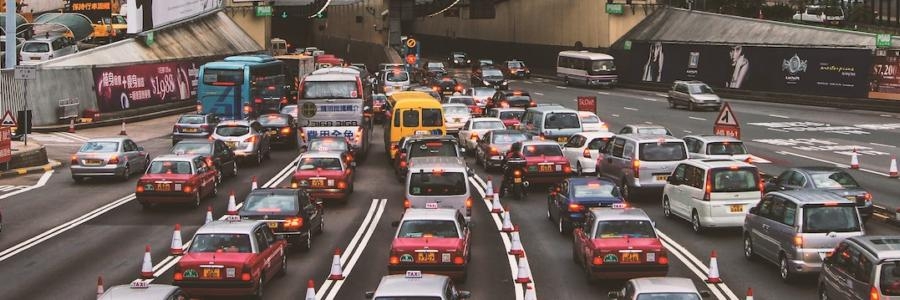Stop and Go: The Science Behind Traffic Jams

The Frustration of Traffic Jams
If there's one thing that gets our blood boiling, it's being stuck in a traffic jam. The frustration of inching forward, only to come to a complete stop, can cause even the most patient of drivers to lose their cool. But have you ever stopped to wonder why traffic jams happen in the first place? Is it simply a matter of too many cars on the road, or is there something more complex at play?
The Mathematics of Traffic Flow
Believe it or not, there is actually a science behind traffic flow. It's called traffic dynamics, and it involves the study of the movement of vehicles on roadways. One of the key concepts in traffic dynamics is the idea of "jamitons". A jamiton is a mathematical model that describes a traffic jam as a moving wave of cars.
Think of it this way: when you're driving on a highway and you come to a sudden stop, the cars behind you will also have to stop. This creates a wave of stopped cars that moves backwards along the highway. As the wave travels, more and more cars get caught up in it, until the entire roadway is gridlocked.
The Role of Human Behavior
Of course, it's not just math and physics that contribute to traffic jams. Human behavior also plays a significant role. Drivers who brake suddenly, merge at the last minute, or try to weave in and out of traffic can all contribute to the formation of a jamiton.
In fact, studies have shown that even minor disruptions in traffic flow - like a driver changing lanes without signaling - can cause a ripple effect that leads to a traffic jam. This is because other drivers have to slow down or change lanes themselves in response to the disruption, which creates a small jamiton that can quickly grow larger.
Technological Solutions
So what can be done to prevent traffic jams? One solution is to use technology to improve traffic flow. For example, many cities are implementing "smart" traffic lights that use sensors to detect the flow of traffic and adjust their timing accordingly. This can help to reduce the number of stops and starts that drivers have to make, which can in turn reduce the likelihood of a traffic jam.
Another technological solution is the use of autonomous vehicles. Self-driving cars are programmed to maintain a safe distance from other cars and to drive at a consistent speed, which can help to prevent the formation of jamitons. Additionally, self-driving cars can communicate with each other to coordinate their movements, which can further improve traffic flow.
The Future of Traffic Dynamics
As our cities continue to grow and more and more people rely on cars for transportation, the study of traffic dynamics will become increasingly important. By understanding the science behind traffic flow, we can develop new technologies and strategies to improve the way we move people and goods from one place to another.
Of course, it will also require changes in human behavior. Drivers will need to become more aware of their actions on the road and take steps to avoid behaviors that can contribute to traffic jams. And as we continue to develop new technologies, we will need to find ways to integrate them into our existing infrastructure and make them accessible to all.
In the end, the goal is to create a transportation system that is efficient, safe, and sustainable. By working together - drivers, engineers, and policymakers - we can achieve a future where traffic jams are a thing of the past. Until then, however, we may still find ourselves stuck in the occasional gridlock. So the next time you're sitting in bumper-to-bumper traffic, take a moment to appreciate the complex science behind the jamiton - and try not to honk your horn too much.
|
|







